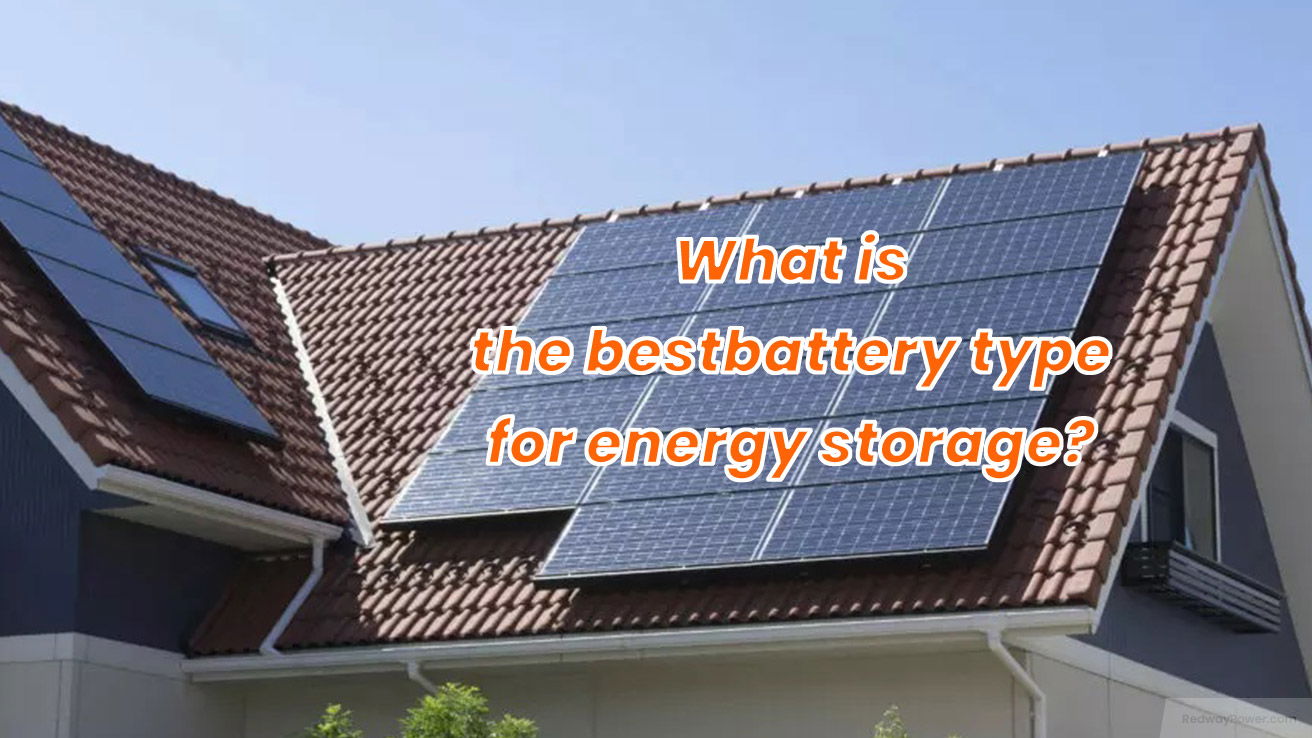What is the Best Battery Type for Energy Storage
Energy storage has become increasingly crucial in today's world, where renewable energy sources like solar and wind are gaining prominence. One of the critical aspects of effective energy storage is selecting the right battery type. With various options available in the market, each with its own set of advantages and limitations, it's essential to understand the characteristics of different battery types to determine what is the best battery type for energy storage that suits your needs best.

Lithium-Ion Batteries
Lithium-ion batteries have garnered significant attention in recent years due to their high energy density, lightweight design, and long cycle life. These batteries find applications in a wide range of devices, from smartphones to electric vehicles and grid-scale energy storage systems. The ability to charge and discharge efficiently makes them ideal for renewable energy integration and load shifting. However, concerns regarding safety, cost, and environmental impact remain challenges for widespread adoption.
Lead-Acid Batteries
Lead-acid batteries have been around for over a century and remain one of the most common types of batteries for energy storage. Their relatively low cost and robustness make them suitable for applications where cost-effectiveness is a priority, such as backup power systems and off-grid installations. However, lead-acid batteries have limitations in terms of energy density and lifespan, requiring regular maintenance and posing environmental risks due to lead content.
Nickel-Cadmium Batteries
Nickel-cadmium batteries offer good performance in terms of energy density and reliability, making them suitable for applications requiring high power output and frequent cycling. However, concerns about cadmium toxicity and environmental impact have led to a decline in their use in recent years. Nickel-cadmium batteries are being replaced by newer technologies with improved safety and sustainability features.
Flow Batteries
Flow batteries utilize liquid electrolytes stored in external tanks, allowing for scalable and flexible energy storage solutions. These batteries offer advantages such as long cycle life, rapid response times, and the ability to decouple power and energy capacity. However, challenges related to cost, efficiency, and system complexity hinder widespread adoption, particularly in smaller-scale applications.
Solid-State Batteries
Solid-state batteries represent a promising avenue for future energy storage technology, offering advantages such as higher energy density, enhanced safety, and improved longevity compared to traditional lithium-ion batteries. By replacing the liquid electrolyte with a solid material, solid-state batteries eliminate the risk of leakage and thermal runaway while enabling higher charging rates and extended lifespan. However, commercialization and scalability remain key challenges for widespread adoption.
Comparison of Battery Types
When choosing the best battery type for energy storage, several factors must be considered, including cost-effectiveness, energy density, lifespan, and environmental impact. While lithium-ion batteries offer high energy density and long cycle life, lead-acid batteries may be more cost-effective for certain applications. Nickel-cadmium batteries provide a balance between performance and environmental concerns, while flow batteries and solid-state batteries offer innovative solutions with their unique advantages and drawbacks.
Factors to Consider When Choosing a Battery Type
Several factors should be taken into account when selecting a battery type for energy storage:
- Energy requirements: Determine the amount of energy storage needed to meet your specific application requirements.
- Durability: Assess the expected lifespan and cycling capabilities of the battery under different operating conditions.
- Maintenance needs: Consider the maintenance requirements and operational costs associated with each battery type.
- Environmental considerations: Evaluate the environmental impact of battery manufacturing, operation, and disposal, including issues related to resource depletion and pollution.
Future Trends in Battery Technology
As research and development in battery technology continue to advance, several promising trends are emerging:
- Advancements in materials science: New materials and manufacturing techniques are being explored to improve battery performance and reduce costs.
- Integration with renewable energy sources: Batteries are increasingly being integrated with solar, wind, and other renewable energy systems to provide grid stability and energy independence.
- Energy storage optimization: Smart grid technologies and advanced control algorithms are being developed to optimize energy storage and distribution networks.
- Environmental sustainability: Efforts are underway to develop more sustainable battery chemistries and recycling processes to minimize environmental impact.
Conclusion
Selecting the best battery type for energy storage involves weighing various factors such as performance, cost, and environmental considerations. While lithium-ion batteries remain a popular choice for many applications, other options such as lead-acid, nickel-cadmium, flow, and solid-state batteries offer alternative solutions with their own set of advantages and limitations. By carefully evaluating your specific requirements and priorities, you can choose the battery type that best meets your needs while ensuring a sustainable and reliable energy storage solution.
FAQs
- Which battery type is best for home energy storage?
- The best battery type for home energy storage depends on factors such as energy requirements, budget, and space constraints. Lithium-ion batteries are commonly used for residential applications due to their high energy density and long cycle life.
- Are solid-state batteries safer than traditional lithium-ion batteries?
- Solid-state batteries offer improved safety features compared to traditional lithium-ion batteries since they eliminate the risk of electrolyte leakage and thermal runaway. However, commercialization and scalability challenges remain.
- What is the lifespan of lead-acid batteries?
- The lifespan of lead-acid batteries varies depending on factors such as usage patterns, operating conditions, and maintenance practices. Typically, lead-acid batteries can last anywhere from three to ten years.
- Are flow batteries suitable for grid-scale energy storage?
- Flow batteries are well-suited for grid-scale energy storage due to their scalability, rapid response times, and long cycle life. However, challenges related to cost and system complexity need to be addressed for widespread adoption.
- How do environmental concerns impact battery selection?
- Environmental concerns such as resource depletion, pollution, and end-of-life disposal play a significant role in battery selection. Choosing a battery type with minimal environmental impact can help mitigate these concerns and ensure sustainable energy storage solutions.
